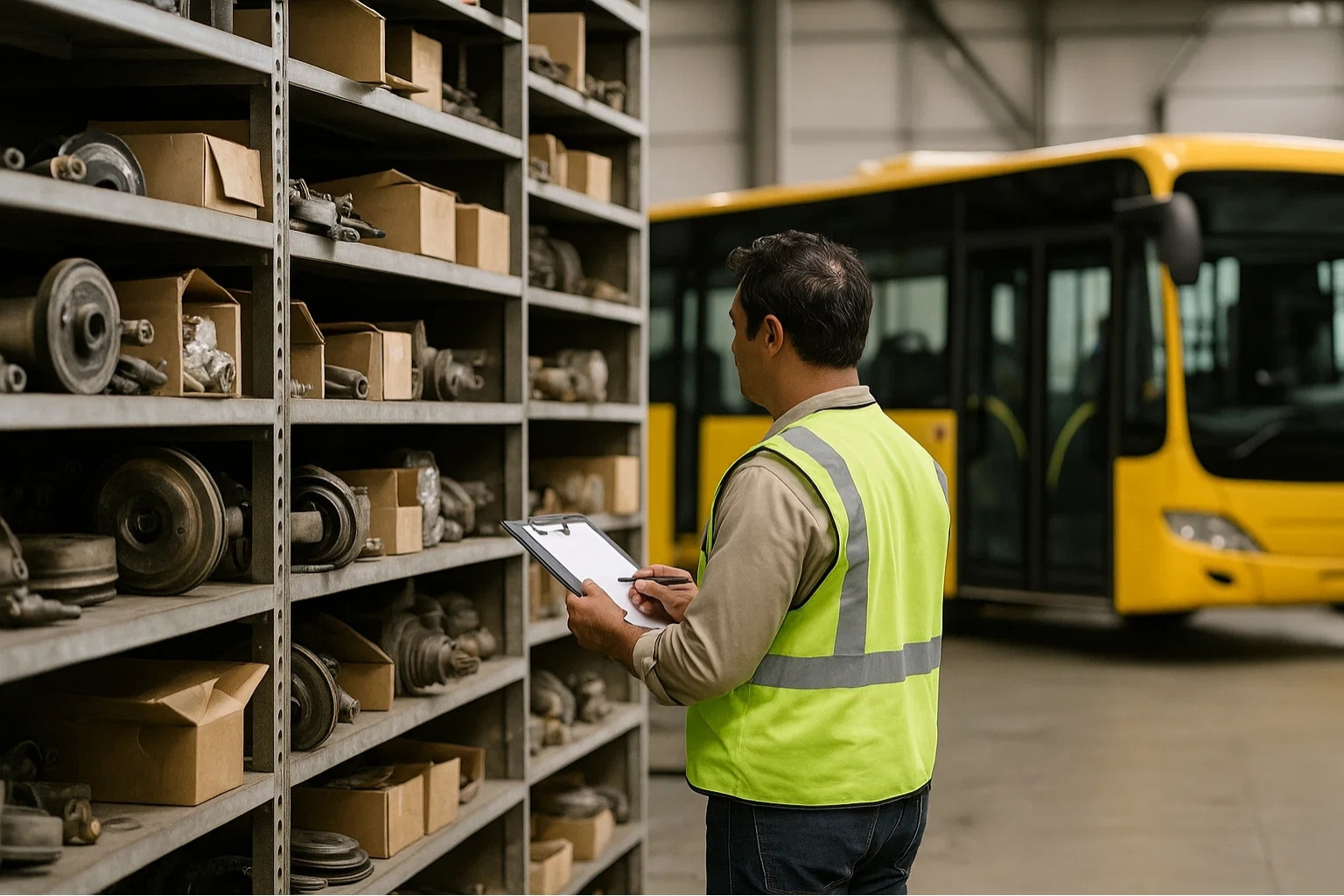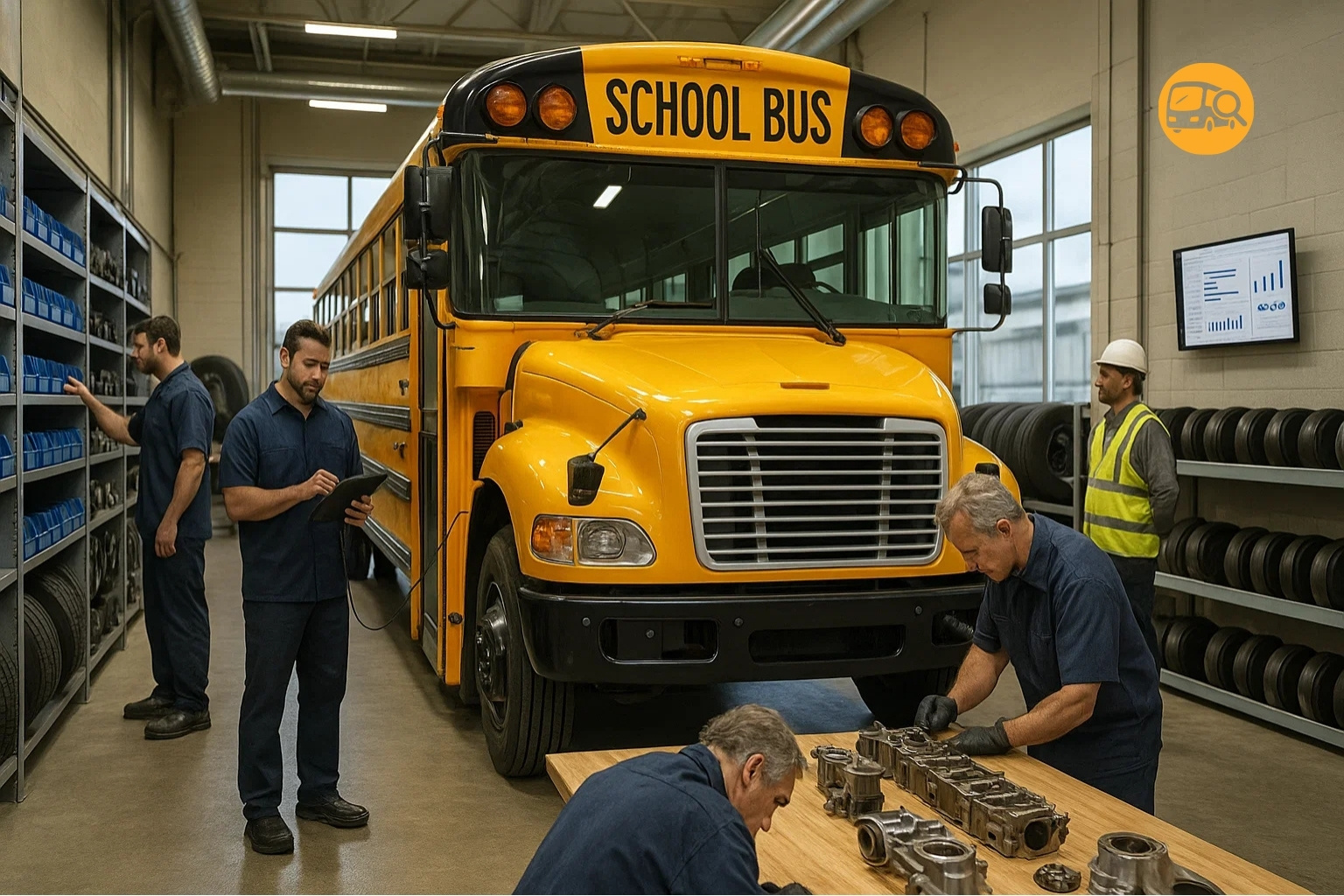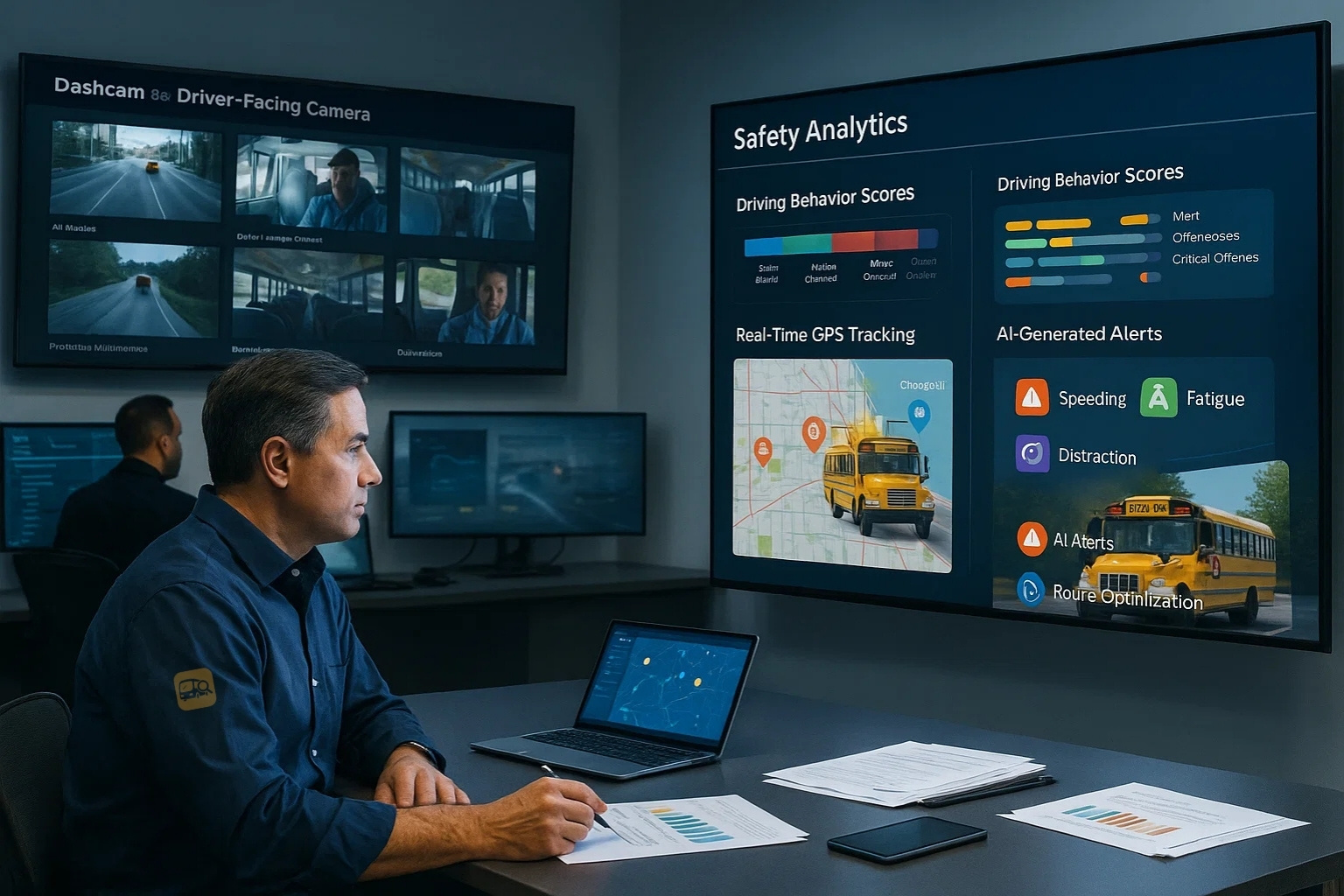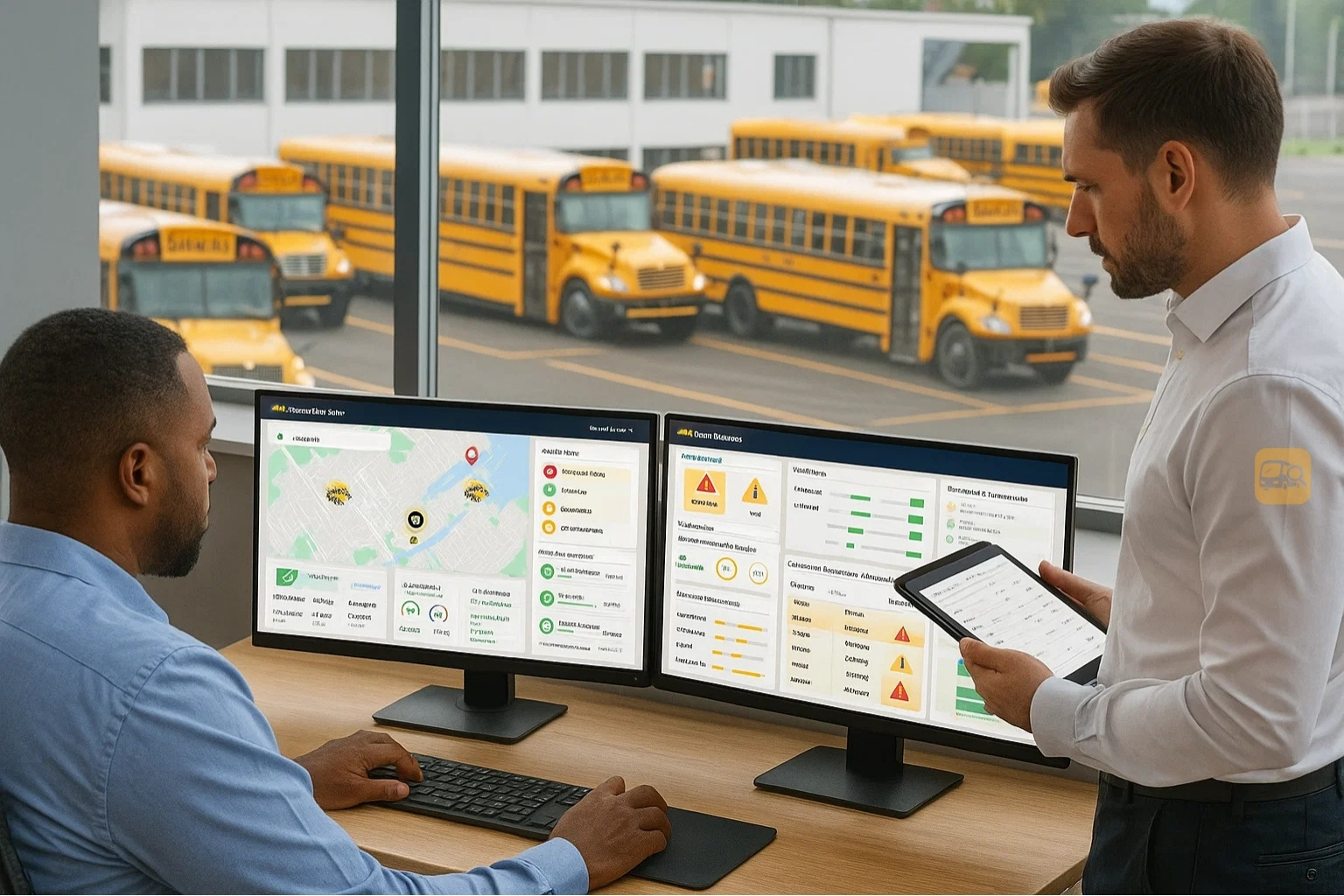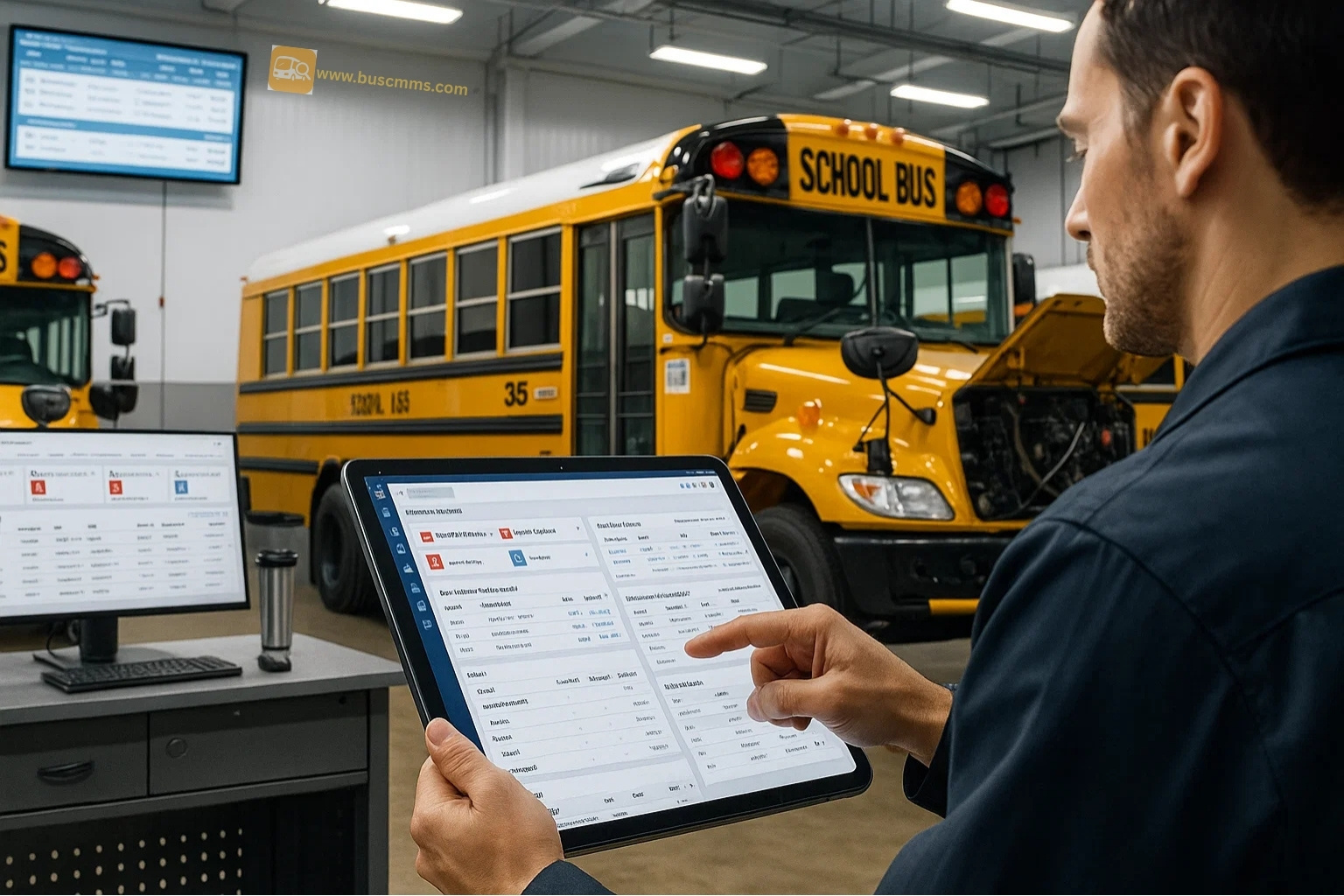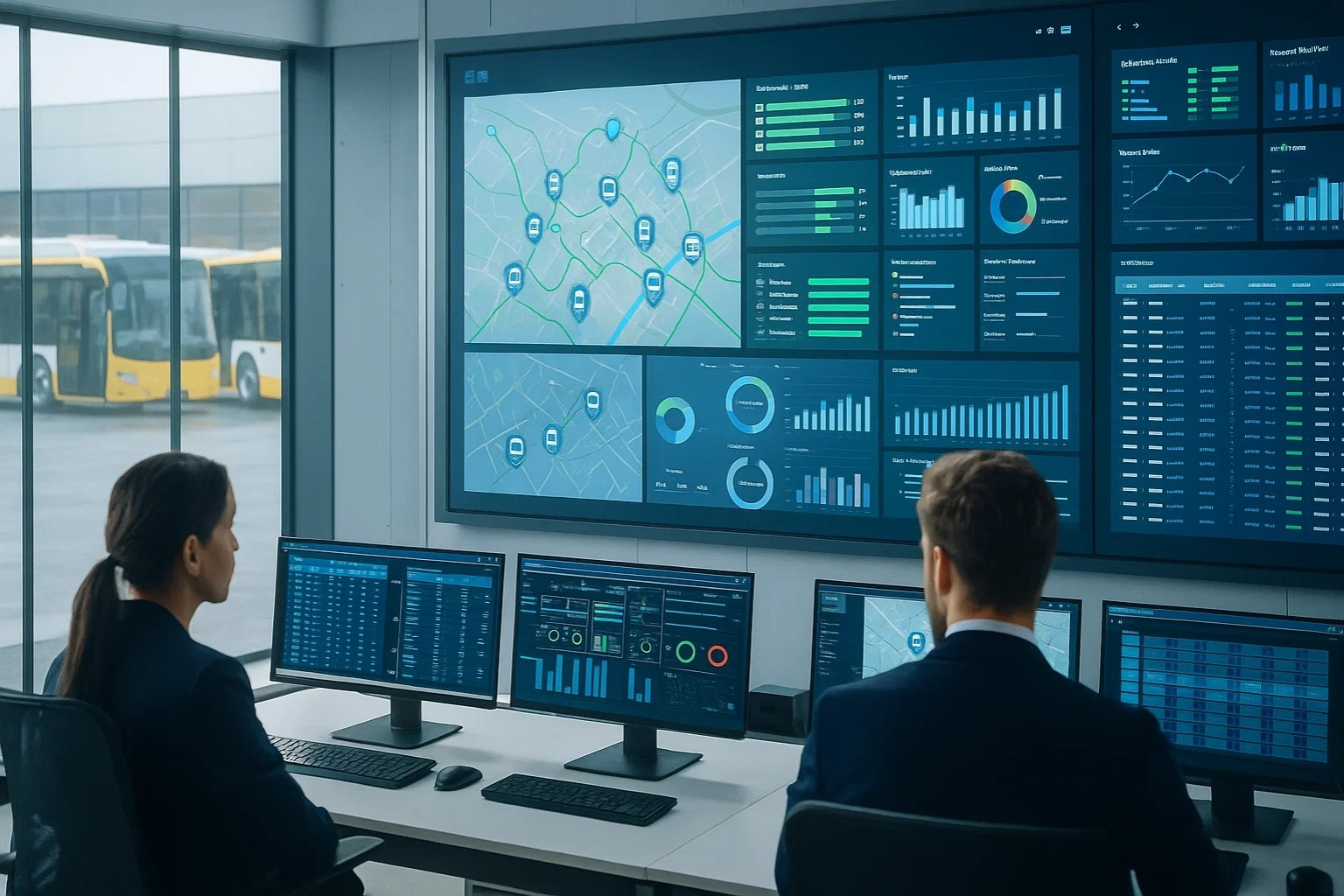Manufacturing professionals know that efficient inspection workflows are the backbone of quality assurance and operational excellence. The same principles that govern automated quality control systems on production lines are now revolutionizing school bus inspection processes across the United States. Just as manufacturing operations have moved from manual clipboard-based inspections to sophisticated automated quality control modules, transportation fleets are experiencing a similar transformation.
With over 480,000 school buses requiring regular safety inspections to maintain DOT compliance and ensure student safety, the need for streamlined, error-proof inspection workflows have never been more critical. Automated bus inspection modules represent the next evolution in transportation quality management, delivering the same measurable improvements in efficiency, accuracy, and compliance that manufacturing professionals have come to expect from their quality control systems.
Digital Inspection Protocols and Standardization
Manufacturing professionals understand that consistent, standardized inspection procedures are essential for maintaining quality standards across shifts, technicians, and facilities. Automated bus inspection modules apply this same principle by digitizing inspection checklists and ensuring every technician follows identical protocols for each vehicle type.
These digital modules eliminate the variability inherent in paper-based inspections where different technicians might interpret checklist items differently or skip steps under time pressure. Each inspection point includes detailed visual guides, specification parameters, and pass/fail criteria that mirror the precision of manufacturing quality control stations.
- Pre-inspection Setup: Vehicle identification automatically populates inspection history and maintenance records
- Guided Inspection: Step-by-step digital checklist with visual references and specification tolerances
- Real-time Documentation: Photos, measurements, and notes captured directly in the system
- Automated Reporting: Instant generation of compliance reports and work orders for identified issues
Integration with Quality Management Systems
Modern automated inspection modules integrate seamlessly with existing quality management systems (QMS) and enterprise resource planning (ERP) platforms that manufacturing professionals rely on daily. This integration creates a closed-loop system where inspection results automatically trigger maintenance work orders, parts procurement, and compliance documentation.
The data architecture mirrors manufacturing quality systems with real-time dashboards, trend analysis, and statistical process control capabilities. Inspection metrics feed directly into key performance indicators (KPIs) that track fleet reliability, safety compliance, and operational efficiency using the same analytical frameworks employed in manufacturing environments.
Advanced Integration Capabilities:
- ERP Connectivity: Direct integration with maintenance management and parts inventory systems
- Compliance Tracking: Automated documentation for DOT, state, and federal inspection requirements
- Mobile Synchronization: Offline inspection capability with automatic data sync when connectivity returns
- Audit Trail Management: Complete inspection history with tamper-proof timestamps and digital signatures
Workflow Optimization and Lean Principles
Automated inspection modules embody lean manufacturing principles by eliminating waste in inspection processes while maximizing value-added activities. Traditional paper-based inspections often involve significant non-value-added time spent on data transcription, report generation, and information retrieval—activities that automated systems handle instantaneously.
Traditional Inspection Process:
- Manual checklist completion
- Paper form transcription
- Manual report generation
- Separate work order creation
- Physical file storage
Automated Inspection Process:
- Digital guided inspection
- Real-time data capture
- Automatic report generation
- Integrated work order creation
- Cloud-based data storage
The workflow optimization extends beyond individual inspections to fleet-wide scheduling and resource allocation. Automated systems use historical data and predictive analytics to optimize inspection schedules, balance technician workloads, and identify patterns that could indicate systemic issues across the fleet.
Predictive Quality and Failure Analysis
Advanced automated inspection modules incorporate machine learning algorithms that analyze inspection data patterns to predict potential failures before they occur—a concept familiar to manufacturing professionals working with predictive quality systems. These algorithms identify subtle trends in wear patterns, performance degradation, and component failure rates that human inspectors might miss.
The system builds comprehensive failure mode and effects analysis (FMEA) databases based on real-world inspection data, enabling proactive maintenance strategies that prevent safety issues and reduce unplanned downtime. This approach mirrors the statistical process control methodologies used in manufacturing to maintain consistent product quality.
Compliance Automation and Regulatory Reporting
Manufacturing professionals understand the critical importance of regulatory compliance and the documentation required to demonstrate adherence to safety standards. Automated bus inspection modules handle compliance documentation with the same rigor and precision that manufacturing quality systems apply to regulatory reporting.
The systems automatically generate inspection reports in formats required by various regulatory bodies, maintain inspection schedules to ensure compliance deadlines are met, and provide audit-ready documentation that withstands regulatory scrutiny. Real-time compliance dashboards provide visibility into fleet-wide compliance status, similar to manufacturing quality dashboards that track product conformance.
- Regulatory Calendar: Automatic scheduling of required inspections based on federal and state regulations
- Digital Signatures: Secure, legally-compliant electronic signatures for inspection certification
- Instant Reporting: One-click generation of compliance reports for regulatory submissions
- Exception Management: Automatic flagging of non-conformances with escalation protocols
Return on Investment and Performance Metrics
The financial benefits of automated inspection modules align closely with the ROI models that manufacturing professionals use to justify quality system investments. Direct labor savings from reduced inspection time, combined with indirect benefits from improved compliance and reduced liability exposure, create compelling business cases for automation adoption.
Performance metrics from automated inspection systems provide the same level of operational insight that manufacturing professionals rely on for continuous improvement initiatives. Key metrics include inspection cycle time, defect detection rates, technician productivity, and compliance adherence rates—all tracked with the precision and analytical depth expected in manufacturing environments.
Conclusion: The Future of Quality Control in Transportation
Automated bus inspection modules represent the natural evolution of quality control principles from manufacturing to transportation. For manufacturing professionals, the technology offers familiar concepts applied to a new domain: standardized processes, data-driven decision making, and continuous improvement through automated systems.
The implementation of these systems delivers measurable improvements in efficiency, accuracy, and compliance while reducing the administrative burden on maintenance teams. As school districts across the United States seek to optimize their operations and improve safety outcomes, they need partners who understand the complexities of automated quality systems and can deliver the same level of operational excellence that defines modern manufacturing.
The future of bus inspection isn't just automated—it's intelligently automated, leveraging the same quality management principles and analytical rigor that have transformed manufacturing operations worldwide. For manufacturing professionals looking to apply their expertise in new sectors, automated bus inspection modules offer an opportunity to drive meaningful improvements in safety, efficiency, and operational performance.
Ready to Automate Your Fleet Inspection Workflow?
Join hundreds of US school districts that have streamlined their inspection processes and achieved measurable improvements in efficiency and compliance.
Getting StartedBook a Demo


